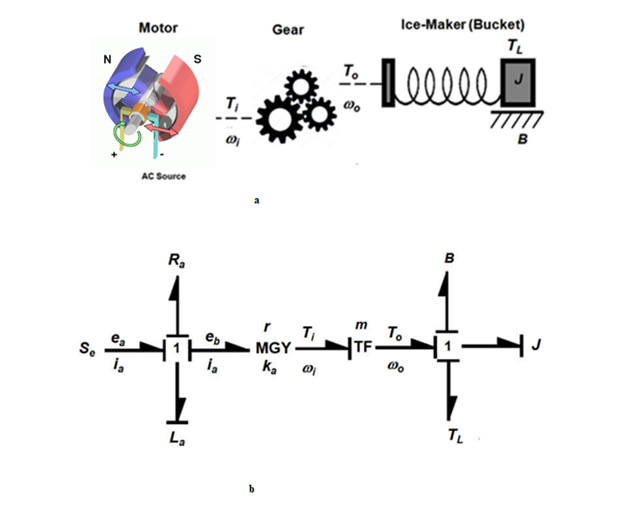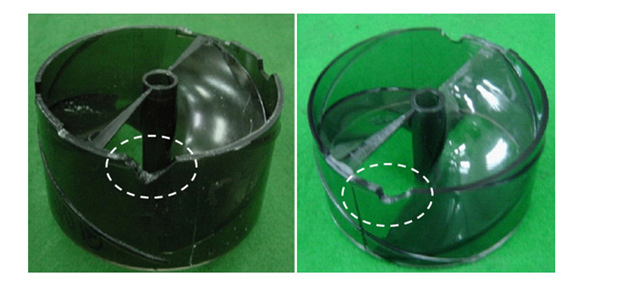Impact Factor : 0.548
- NLM ID: 101723284
- OCoLC: 999826537
- LCCN: 2017202541
Seongwoo Woo1*, Dennis L O Neal2 , Yimer Mohammed Hassen1 and Gezae Mebrahtu3
Received: August 15, 2022; Published: August 25, 2022
*Corresponding author: Seongwoo Woo, Ethiopia Manufacturing Technology, Mechanical Technology Faculty, Ethiopian Technical University, Addis, Ethiopia
DOI: 10.26717/BJSTR.2022.45.007265
To increase the life of system operated by a machine, accelerated testing as structured reliability way presents to assess the design of mechanical products subjected to repetitive impact loads, based on quantum-transported life–stress prototype and sample size. It will help an engineer to reveal the design imperfections of the mechanical product which making a critical influence on product reliability for the design procedure. Eventually, companies can circumvent product recalls due to the design flaws from the marketplace. As an experiment example, the redesign of the helix upper dispenser failed in the marketplace was studied.
Keywords: Parametric Accelerated Life Testing (ALT); Mechanical System; Compressor; Fatigue; Design Imperfections
The mechanical systems such as automobile, airplane, and refrigerator run power to fulfill a task which necessitates forces and motion and yield mechanical advantages by properly adapting system mechanisms. For instance, utilizing the vapor-compression refrigeration system, a refrigerator dispenses chilled air from the heat exchanger such as evaporator to the refrigerator and freezer department. As consumers want an ice-making function, it was designed to product ice. If there is a design defect in the system where the (random) loads are subjected, icemaker will suddenly stop in its predicted life. After recognizing the design flaws by reliability testing, an engineer could optimally design [1]. This study investigates a parametric ALT as structured reliability way which could be applied to mechanical products. It covers:
a) An ALT strategy,
b) A load examination,
c) A customised ALTs with the alternations, and
d) A judgement of whether the product design(s) fulfil the targeted BX life. As a case investigation, we will study the redesign of refrigerator compressor.
Linear transport processes are stated as follows:

Solid-state diffusion of impurities in silicon, J, could be formulated as

If Equation (2) puts a reverse function, the life-stress (LS) prototype could be restated as:

The sine hyperbolic form  in Equation (3) has
characteristics as follows:
in Equation (3) has
characteristics as follows:
 at the beginning has some linear outcome,
at the beginning has some linear outcome,
 has what is formed as a middle outcome, and
has what is formed as a middle outcome, and
 in the final is high. Because an ALT in the middle
range is normally carried out, Equation (4) could be expresed as:
in the final is high. Because an ALT in the middle
range is normally carried out, Equation (4) could be expresed as:

To achieve the acceleration factor (AF), which might be expressed as the ratio between the accelerated stress quantities and normal operation circumstances, it could be altered to combine with the effort idea:

To attain the mission cycle of an ALT, sample size formulation with Equation (5) could be stated as [1]:

Case Study: Redesign of the Helix Upper Dispenser Failed in the Marketplace
As the consumer requires ice, an ice-maker function is added to produce ice. The main components are auger motor including a gear system, the bucket case, helix support, helix blade dispenser, dispenser clamp, helix upper dispenser, and blade (Figure 1). In the market, helix upper dispenser in an icemaker failed due to design imperfections under unspecified consumer usage circumstances. Market data manifested that the failed part shall have had the design imperfections:
(1) A 2 mm gap, and
(2) A weld line.
Figure 3: Design idea of an icemaker.
(a) Schematic diagram of an ice-making system.
(b) Its bond graph representation

The blade dispenser made of stainless steel strikes the helix upper dispenser made of plastic under –20°C. A crack in the helix dispenser happens (Figure 2). As manifested in (Figure 3), the mechanical load transfer in an ice-making system can be modeled by using a bond graph model. From the derivation of the bond graph model, the governing equations can be summarized as follows:

From Equation (7) we recognize that the life of the icemaker relies on the applied torque required to squash the ice. The life-stress (LS) prototype in Equation (4) shall be altered as

Thus, the AF in Equation (5) shall be expressed as follows:

Relying on consumer use, an icemaker is utilized a mean of roughly 3–18 times per day. Under greatest usage for 10 years, the ice dispensing happens about 65,700 usage cycles. Company data states that usual torque is 0.69 kN-cm and greatest torque is 1.47 kN-cm. Presuming the damage factor, λ, is 2, AF is roughly 5 in Equation (9). For B1 life 10 years, assuming the shape parameter was presumed to have 2.0, the assigned mission cycles for ten samples computed from Equation (6) were roughly 42,000 cycles. This ALT is designed to assure a B1 life 10 years if helix upper dispenser fails less than once during 42,000 cycles.
In the 1st ALT, the parts such as helix upper dispenser failed at 170 cycles, 5200 cycles, 7880 cycles, 8800 cycles, and 11,600 cycles. Figure 3 manifests a photo contrasting the fractured parts from the market and that from the 1st ALT. As they are alike, by ALT we could reproduce the helix upper dispenser returned from the market (Figure 3). There was a design imperfection — a 2 mm gap. When the blade dispenser made of stainless steel impacted the helix upper dispenser made of plastic, it would fracture. To endure repeated impact loads, the helix upper dispenser returned from the market was modified as follows: 2 mm gap was removed (Figures 4 & 5). In the 2nd ALT, the parts such as helix upper dispenser failed at 17,000 cycles, 25,000 cycles, 28,200 cycles, and 38,000 cycles. As the gap was removed, the life of the helix upper dispenser increased. As the helix upper dispenser did not have insufficient strength, 42,000 mission cycles in the 2nd ALT yet wasn’t satisfied. As a plan of action, a rib on the surface of helix was reinforced. In the 3rd ALT, there were no issues till 75,000 cycles. During three courses of ALTs with the design alternations, the icemaker including helix upper dispenser was assured to be B1 life 10 years.
Figure 4: Fractured parts from the field and ALT.
(a) Failed products returned from the marketplace.
(b) Fracture after first ALT.



